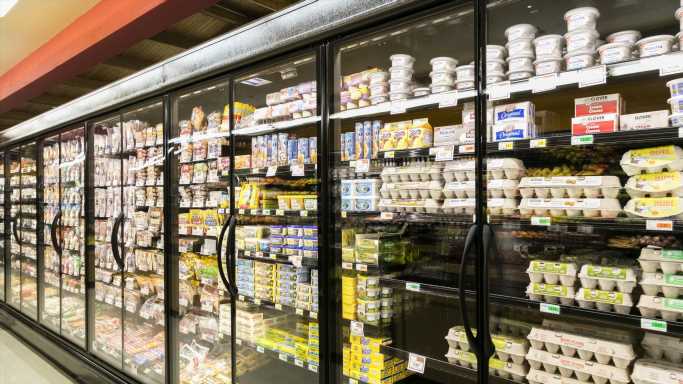The consumer price index rose by 7.7% in October compared to the same month last year, according to the latest release from the Bureau of Labor Statistics. This was considered good news as for the last several months, the jump in the CPI has been between 8% and 9%. However, the single headline figure is an average of the change in prices of different goods and services, and prices of a number of items Americans buy regularly remain over 20% higher year over year. The price of food at employee sites and schools is soaring 95%.
The recent inflation report suggests Americans will not be as badly financially strained by the cost of daily living as previous reports suggested. While government data shows earnings have not kept pace with prices, the Federal Reserve may now be less likely to continue raising rates as a means to tamp down prices. It has long been the theory that high interest rates slow the economy, and a slow economy is an economy with low inflation. (These are the states where inflation is causing the most stress.)
Raising interest rates, however, may have a limited impact considering the several large possible stumbling blocks that could arise in the future and may need to be taken into consideration. The two most dangerous ones have to do with transportation.
Despite work on the part of the federal government, there could still be a railway strike. Trains are a major conduit for the movement of goods across the country. This could come in December. A strike could result in shortages of some goods, which could put upward pressure on prices.
Additionally, diesel fuel supply levels are very low, meaning prices are historically high. Trucks are another primary means to move goods around America. The higher fuel prices will likely be passed to consumers. Tom Kloza, the global head of energy analysis at the Oil Price Information Service, told The New York Times, “The economic impact is insidious because everything moves across the country powered by diesel.”
No one should assume they know what the Federal Reserve plans. The CPI’s drop to 7.7% still leaves inflation rates at a multi-decade high. The Fed may not back off its plans to raise interest rates until the inflation figure is closer to 2%, which the central bank says is its target.
The proof that inflation remains very high is easily seen in the prices people face buying items they use everyday. The price of bread is up 19%. The same is true of lunch meats. The price of butter is up 27%, and that of eggs is up 43%. Inflation rates may be marginally better, but not enough so most Americans would know it. (This is what Thanksgiving dinner will cost this year thanks to inflation.)
To determine the 50 household items that are soaring in price, 24/7 Wall St. reviewed the BLS’ Consumer Price Index Summary October report. Prices are compared to October 2021.
Click here to see the price of this household item is soaring.
Sponsored: Find a Qualified Financial Advisor
Finding a qualified financial advisor doesn’t have to be hard. SmartAsset’s free tool matches you with up to 3 fiduciary financial advisors in your area in 5 minutes. Each advisor has been vetted by SmartAsset and is held to a fiduciary standard to act in your best interests. If you’re ready to be matched with local advisors that can help you achieve your financial goals, get started now.
Source: Read Full Article
